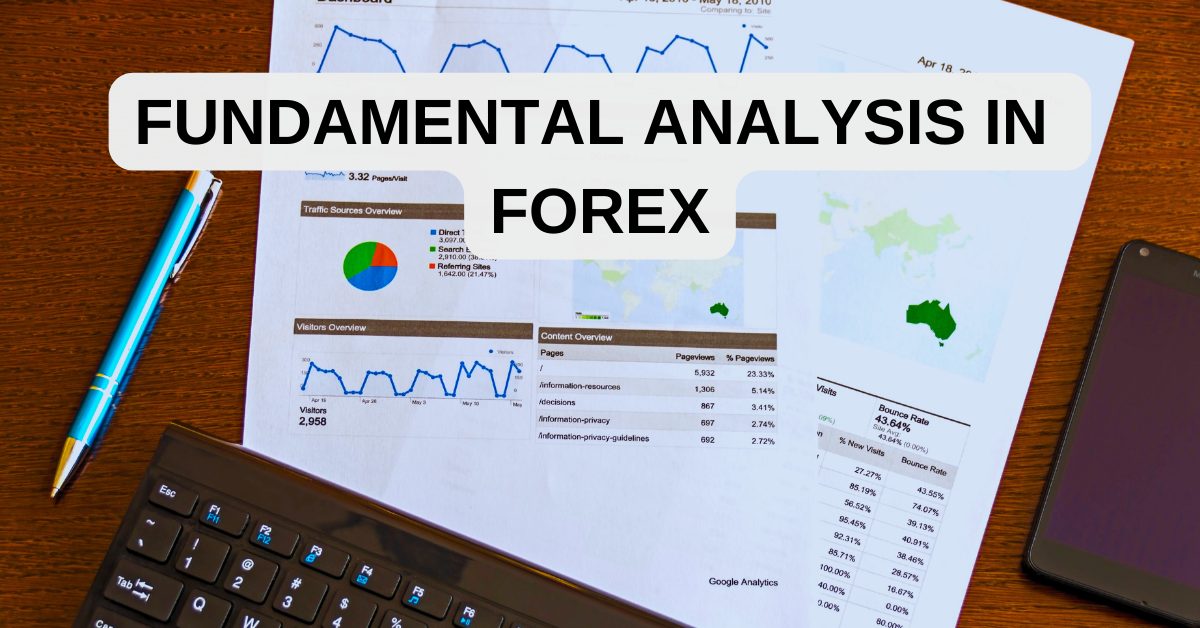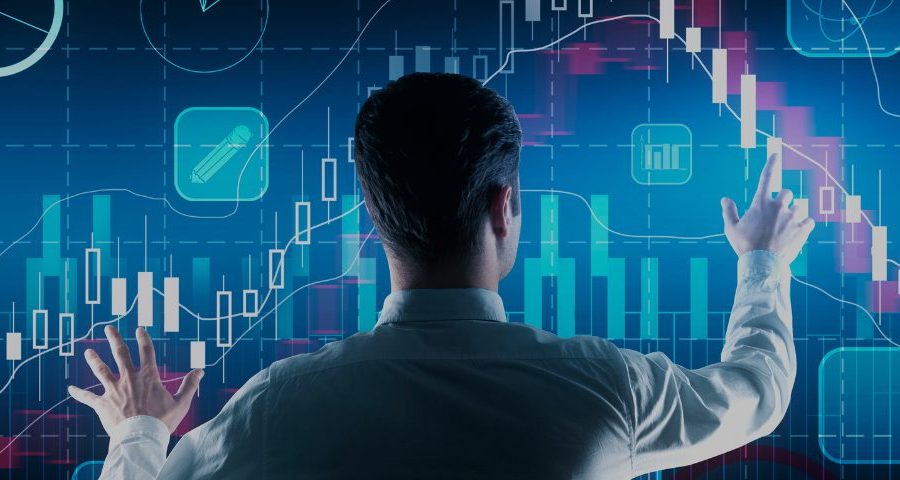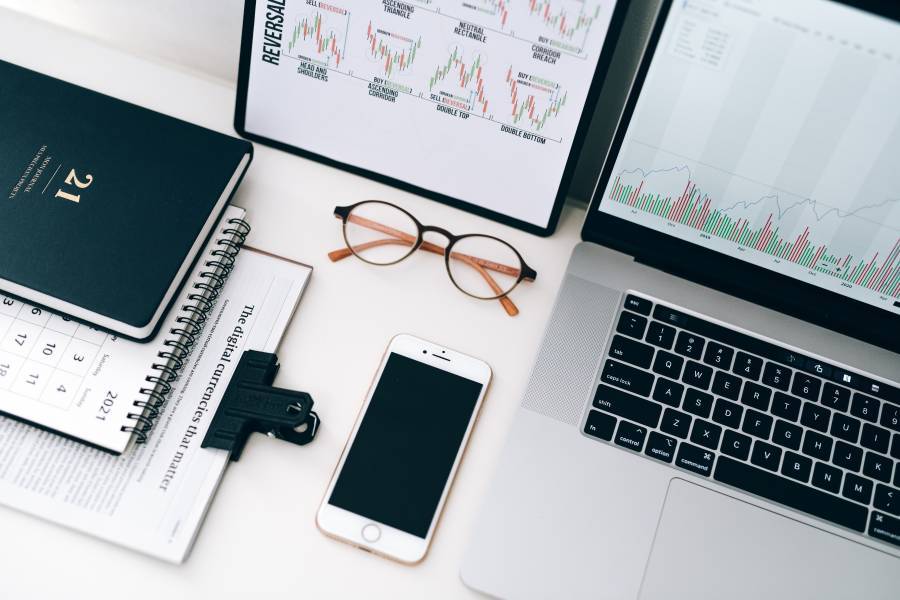Whether you’re an experienced trader or new to the exciting world of forex, learning how to to fundamental analysis in forex trading is an important component to making informed decisions and achieving success. In this article, we’ll go over the essentials of fundamental analysis, explore important economic indicators, and I’ll also recommend some reliable sources to keep you in the know.
The Power of Fundamental Analysis in Forex
Fundamental analysis in forex is the study of a currency’s underlying worth using economic, political, and social indicators. Fundamental analysis, which examines key indicators such as interest rates, GDP growth, and employment data, can help you measure a country’s economic health and determine the future direction of its currency.
Importance of Fundamental Analysis

Fundamental analysis can help you understand the underlying elements that influence currency values. It offers a comprehensive assessment of a country’s economic health. Fundamental analysis skills will enable you to make more educated decisions, anticipate market movements, and ultimately improve your trading strategy.
Forex Trading with Fundamental Analysis
You might be wondering how one trades the FX market using fundamental analysis. Technical analysis focuses on charts and trends, whereas fundamental analysis provides insights into economic factors. The combination of these tactics allows you to make more informed trading selections.
Central Banks and Interest Rates
One of the major roles of all central banks in the world is to control the inflation and flow of money in their economies. They achieve this goal by putting in place monetary policies that dictate the rules of operation in an economy. The there mainly used monetary policies by the central banks around the world are:
- Interest Rates: Central banks use interest rates to manage inflation. By changing the benchmark interest rate, a central bank can influence borrowing costs and economic activity. Raising interest rates is commonly used to control inflation because it makes borrowing more expensive and may slow down economic activity. In contrast, decreasing interest rates can boost economic growth and counteract deflation.
- Open Market Operations: Central banks engage in buying or selling government securities to control the money supply in the economy. Buying securities injects money into the system, while selling them withdraws money. This is another way central banks manage inflation and overall economic stability.
- Quantitative Easing (QE): In extraordinary circumstances, central banks may implement QE, which involves purchasing financial assets to increase the money supply and lower interest rates.
Effects of Interest Rates on a Currency
Rising Interest Rates
- When a central bank raises interest rates, it typically does so to combat inflation or cool down an overheated economy. Higher interest rates make borrowing more expensive, which can lead to reduced spending and investment. However, from an investor’s perspective, higher interest rates offer the potential for better returns on investments denominated in that currency.
- Investors are attracted to higher yields, so a currency with rising interest rates becomes more appealing. Foreign investors may seek to invest in assets denominated in that currency, leading to increased demand. This heightened demand can drive up the value of the currency against others.
Falling Interest Rates
- Conversely, when a central bank lowers interest rates, it aims to stimulate economic activity, boost borrowing, and investment. Lower interest rates make borrowing cheaper, encouraging spending. However, lower yields may make investments in that currency less attractive to investors seeking higher returns.
- Falling interest rates can result in a shift in investor sentiment away from that currency. Investors may seek higher yields in other currencies or assets, leading to a decrease in demand for the currency with lower interest rates. This reduced demand can contribute to the depreciation of the currency against others.
Economic Indicators Used by Central Banks

Before central banks come up with their monetary policies, they look at different economic indicators and weigh their impact in the economy before arriving at key decisions like whether to increase or cut interests. It is worth noting that these indicators are lagging indicators as they are released often after a month after they are reported.
As a trader you can benefit by studying these indicators and anticipating central bank decisions that will always affect the currency markets. To make it easier for you, I have included how you should interpret these indicators to get the most out of the data.
1. Consumer Price Index (CPI)
CPI measures the average change in prices paid by consumers for goods and services. It’s a direct indicator for inflation, reflecting shifts in the cost of living.
Interpretation
A rising CPI signals inflationary pressures. For traders, this could mean potential interest rate hikes by the central bank to control inflation. Keeping an eye on CPI helps gauge the purchasing power of a currency.
2. Gross Domestic Product (GDP)
GDP is the total value of all goods and services produced within a country. It serves as a barometer for the overall health of the economy.
Interpretation
Robust GDP growth indicates a healthy economy, potentially leading to expectations of higher interest rates. Traders look at GDP data to assess economic performance and predict future currency movements.
3. Employment Data
Employment indicators, including Non-Farm Payrolls (NFP), Average Earnings, and New Job Openings, provide insights into the labor market’s health.

Interpretation
Rising employment, higher earnings, and increased job openings are positive signals for a currency. Traders assess these indicators to understand the strength of the job market and its potential impact on consumer spending.
4. Retail Sales
Retail sales measure the total receipts of retail stores, offering a snapshot of consumer spending.
Interpretation
Increasing retail sales suggest growing consumer confidence and economic expansion. Traders view positive retail sales data as an indicator of a robust economy, potentially leading to currency strength.
5. Purchasing Managers' Index (PMI)
PMI gauges economic health in the manufacturing and services sectors based on survey responses from purchasing managers.
Interpretation
A PMI above 50 indicates economic expansion, while below 50 suggests contraction. Traders use PMI to assess overall economic activity, helping them anticipate potential currency movements.
6. Durable Goods Orders
Durable goods orders measure new orders placed with manufacturers for long-lasting goods like appliances and machinery.
Interpretation
A rise in durable goods orders signals increased business investment and economic growth. Traders see this as a positive indicator for the currency, reflecting overall economic health.
7. Housing Data
Housing data includes indicators such as housing starts, building permits, and existing home sales, offering insights into the real estate market.
Interpretation
Positive housing data indicates a healthy housing market, contributing to economic growth. Traders analyze these indicators to gauge consumer confidence and potential currency movements.

8. Producer Price Index (PPI)
PPI measures the average change in selling prices received by producers for their output.
Interpretation
Rising PPI may indicate future inflationary pressures. Traders monitor PPI trends to anticipate potential impacts on consumer prices, helping them assess the overall economic landscape.
Staying Informed with Forex Fundamentals
When it comes to accessing real-time economic indicators and staying abreast of market-moving events, having reliable sources is paramount. Here are some platforms that we recommend:
Forex Factory is a comprehensive platform providing a calendar of economic events, forums for trader discussions, and news relevant to the forex market. It’s a go-to resource for traders seeking up-to-date information on economic indicators.
Bloomberg is a global leader in business and financial news. The platform offers a wide range of resources, including real-time market data, economic indicators, and insightful analysis. It’s a trusted source for traders looking for in-depth financial information.
Investing.com is a comprehensive financial website offering a variety of tools, news, and analysis for traders. The platform covers economic indicators, market data, and breaking news, making it a valuable resource for those navigating the forex market.
Geo-Political News
Geopolitical factors play a crucial role in influencing currency markets. Here are some key considerations when monitoring geopolitical situations and trends in forex trading:
1. Political Stability and Instability

Political stability is generally positive for a currency, as it fosters investor confidence. Conversely, political instability, such as elections, coups, or civil unrest, can lead to uncertainty and negatively impact a currency.
2. Trade Relations and Tariffs
Trade tensions and tariff disputes between countries can lead to market volatility. Investors monitor developments in trade negotiations and agreements, as they can impact economic growth and trade balances, influencing currency values.
3. Global Conflicts and Terrorism
Geopolitical events such as conflicts and acts of terrorism can create uncertainty and risk aversion. In times of heightened geopolitical tension, investors may seek safe-haven currencies, like the US Dollar (USD) or the Swiss Franc (CHF).
4. Economic Sanctions
The imposition of economic sanctions on a country can affect its economic stability and currency. Sanctions can lead to capital flight, reduced trade, and overall economic challenges.
5. Central Bank Policies in Response to Geopolitical Events
Central banks may adjust monetary policies in response to geopolitical events to stabilize the economy. Traders need to be attentive to central bank statements and decisions influenced by geopolitical factors.
6. Energy Prices
Geopolitical tensions in oil-producing regions can affect energy prices. Since many currencies are linked to commodities, changes in oil prices can influence the economies and currencies of oil-producing nations.

7. Global Health Crises
Events such as pandemics can have profound economic consequences. The COVID-19 pandemic, for example, led to significant market volatility and economic disruptions worldwide.
8. Government Policies and Reforms
Changes in government policies, reforms, and regulatory environments can influence investor confidence and impact currency values. Investors assess the potential economic impact of such changes.
Market Sentiment and Risk Appetite
You should often gauge market sentiment to understand risk appetite. Positive geopolitical developments may boost risk appetite, leading to investments in riskier assets and currencies. Negative developments may trigger a flight to safety, favoring safe-haven currencies.
Geo-Political News - Sources
Keeping an eye on geopolitical events is crucial for understanding the broader context of currency movements. While mainstream media outlets like CNN and BBC provide global coverage, it’s essential to consider alternative sources for diverse perspectives. Here are our recommendations:
Independent News Outlets & Podcasts
- Independent news outlets often offer alternative viewpoints and in-depth analyses. Consider exploring sources like Redacted, The Intercept, and Al Jazeera.
- Podcasts can provide valuable insights into geopolitical events. Our recommended podcast on YouTube is Sean Foo. Tune in to gain expert opinions and discussions on the latest geopolitical developments affecting the global landscape.
Remember, a well-rounded understanding of economic indicators and geopolitical events is crucial for making informed decisions in the dynamic world of forex trading.
Caution for Traders
Scalpers and Day Traders
If you’re a scalper or day trader, be cautious during major news releases. High-impact news can cause volatility, slippage, and whip-saw price movements. Plan accordingly to manage risks effectively.
Intra-day, Swing, or Position Traders
Long-term traders, give your trades room to breathe. Allow sufficient space for stop-loss levels during high-impact news releases. Assess news within the context of the long-term trend for confident trading decisions.
Conclusion
Armed with a deep understanding of fundamental analysis, central bank dynamics, and economic indicators, you’re well-equipped to navigate the forex market. Remember, a holistic approach combining both technical and fundamental analysis is your key to success.
FAQs
- What are the best platforms for real-time forex market data?
Platforms like Forex Factory, Bloomberg, and Investing.com provide comprehensive real-time market data, economic calendars, and analysis.
- How do central banks influence currency demand and supply?
Central banks use tools like interest rates to influence currency demand. Higher rates attract foreign capital, strengthening the currency.
- Why is it crucial to stay informed about geo-political events in forex trading?
Geopolitical events can impact currency values. Stay informed through independent news outlets and podcasts to adapt your strategies to global dynamics.






Leave a Comment